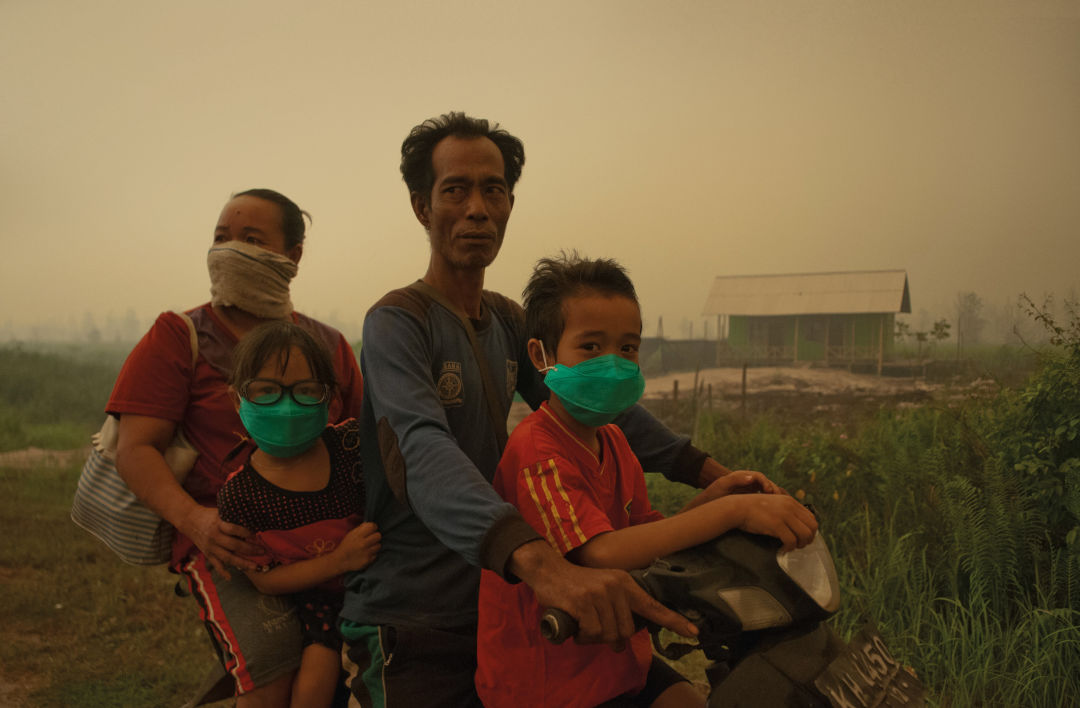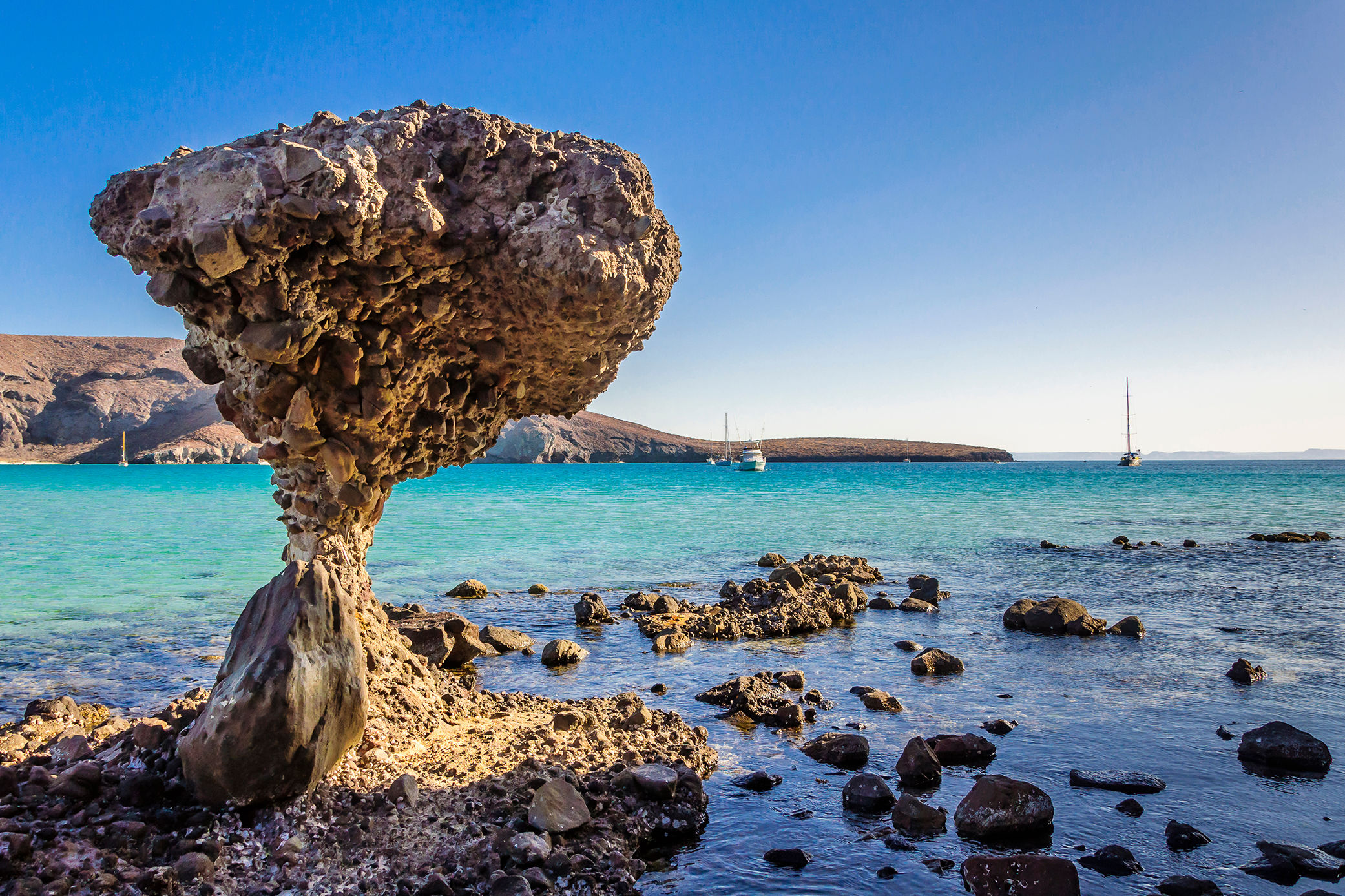Indonesia's Wildfires Are a Climate Disaster. Can Portland Help Douse the Flames?

When you go outside in Jakarta in the summer,” says Robert Q. Benedict of Context Partners, “it smells just like when I stepped out of my front door in Portland this September, during the Gorge fire.”
Smoked-out West Coasters may focus on our own wildfire epidemic. Globally, however, a burning West pales compared to Indonesia’s blazes. Fire seasons in the archipelago nation consume richly biodiverse tropical forest, and one study attributes more than 100,000 deaths in the region in 2015 to smoke and haze. And for the wider world, those fires matter because of an obscure but crucial muck: peat.
This swampy soil underlies Indonesia’s forests—and locks up huge amounts of carbon dioxide. When peat burns, CO2 pours into the atmosphere. By some reckonings, those El Niño–pumped 2015 fires disgorged more globe-warming carbon per day than the US economy.
A major problem with preventing future fires? Indonesia lacks a single authoritative map of its peatlands. If you can’t map a natural resource, you can’t protect it.
“They literally don’t know where to do what,” says David Schimel, a Nobel-winning carbon specialist for NASA’s Jet Propulsion Laboratory. “You can fly over Indonesia as much as you want, but you can’t see the peat because the forest cover is so thick.”
And so Benedict and Charlie Brown, fellow founder of Context Partners, sat in their bright Northeast Portland office not long ago, talking peat. (It was, let’s admit, a pretty geeky conversation.) Context devised the Indonesian Peat Prize, a $1 million challenge to figure out how to chart those tree-covered, carbon-packed boglands. After a two-year high-tech bake-off between scientific teams from all over the world, a winner will be announced on February 2.
“On climate change, most people say you have to change policy,” says Brown, Context’s CEO, “or invent some magical technology that takes carbon out of the air. But here you have a very defined problem. You need a map. And there are serious obstacles to creating it.”
Context is a design company—of a sort. Its work is not typically physical, but rather conceptual: it recently crafted a sustainability-oriented loyalty program for Ikea, for example. The eight-year-old firm has hatched several prize competitions dangling age-old carrots: a little money, a lot of competitive prestige.
“A prize helps you define a problem,” Brown says. “It’s like designing a game. Who’s going to play? How do they win? What happens if they lose? Humans love games.”
In the case of the Peat Prize, the game involves the Packard Foundation, the World Resources Institute, the Indonesian government, a board of judges, and a pack of competing teams thick with international scientific talent. After a couple of qualifying stages, five finalists performed field tests in Indonesia recently.
“In the regular, grant-driven research process, it can be hard to get approval for high-risk projects,” says Sonia Silvestri, an Italian remote-sensing specialist on a finalist team that also involves American, German, Danish, and Indonesian partners. “You have to provide a lot of preliminary results just to get funding. So that makes your work not so new. With a prize, people from different disciplines do work that’s risky.”
Silvestri’s team aims to combine two different sensing technologies—satellites and helicopters are involved—to locate peat and gauge its depth. That team’s collaborative, international cast testifies to a cash prize’s power to catalyze action.
“It attracts attention,” says Frances Seymour, a WRI fellow and Packard Foundation adviser. “It forces synthesis and cooperation among people who would never work together otherwise. With a prize, you’re not just dealing with usual suspects.”
The stakes are urgent. Deforestation for agriculture—particularly for commodities like palm oil, a food additive used in approximately everything—causes peat to dry out. (“When the timber’s gone, the water table goes lower,” says NASA’s Schimel, one of the Peat Prize judges.) Nirarta Samadhi, a former government minister who now heads the World Resources Institute Indonesia, attributes almost three-quarters of Indonesia’s total carbon emissions to land conversion, half of that from peatlands. Environmental organizations see other needs in play.
“There’s a major effort to convince corporations to get peatlands out of their supply chain,” Seymour says. “But to do that, you have to know where they are.” Mapping technology that works in Indonesia could be applied to conservation elsewhere.
In Portland—far from Indonesia, except for that technical detail of sharing an atmosphere—conversation with Brown and Benedict skips along to other problems prizes might address. Portland’s struggles with urban growth? The social fallout from self-driving cars? At a moment when public policy seems stuck, some solutions could be a well-played game away.
“This is one of the most democratic ways to try to solve a problem,” Brown says. “Everyone can play. Can you solve the problem, or not solve the problem?”




